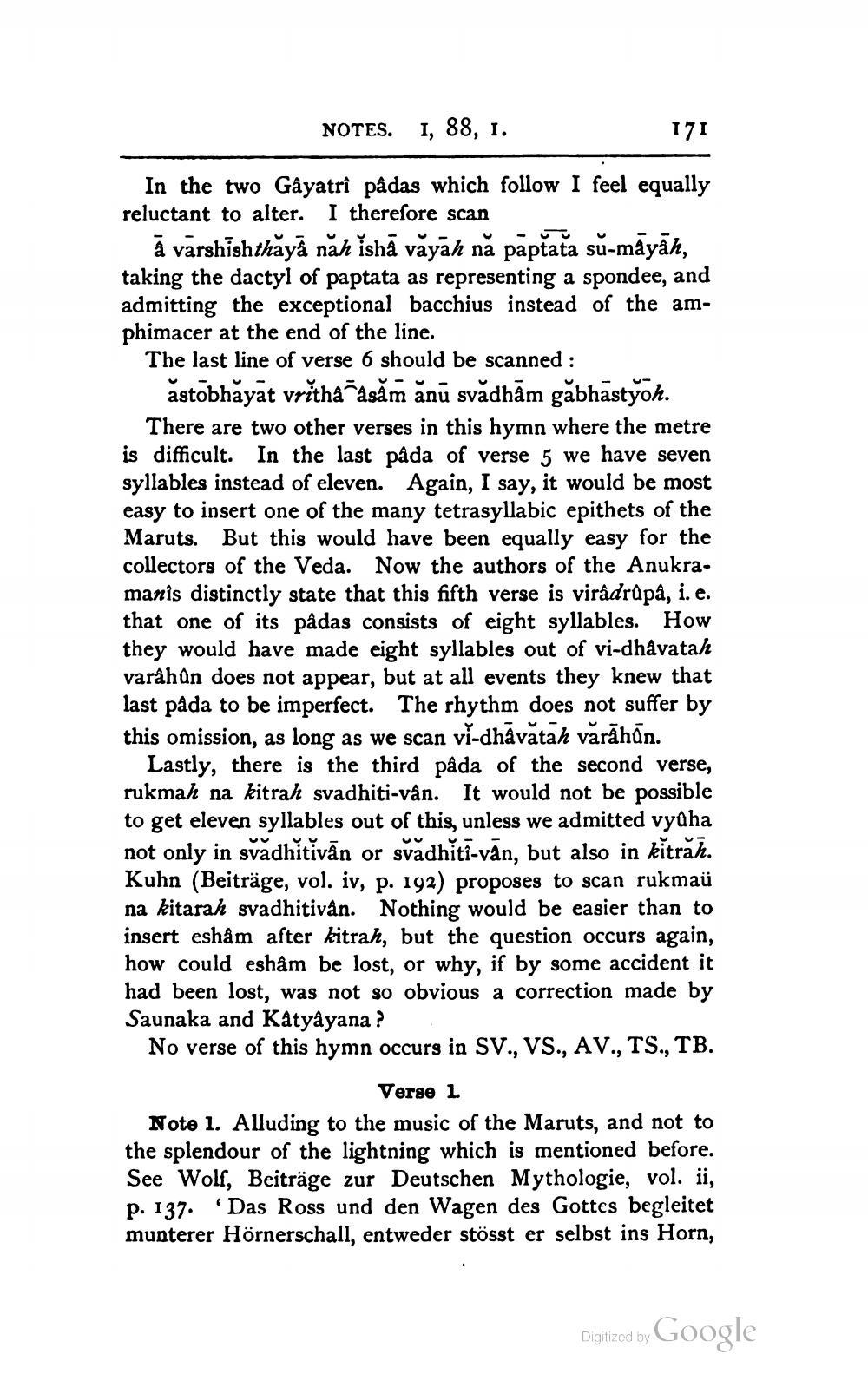________________
NOTES. I, 88, 1.
171
In the two Gâyatrî pâdas which follow I feel equally reluctant to alter. I therefore scan
ā varshishthāyā năh ishā vāyah nă paptata sū-māyāh, taking the dactyl of paptata as representing a spondee, and admitting the exceptional bacchius instead of the amphimacer at the end of the line. The last line of verse 6 should be scanned :
astobhayat vrịtha asăm änū svădhām găbhāstyöh. There are two other verses in this hymn where the metre is difficult. In the last pada of verse 5 we have seven syllables instead of eleven. Again, I say, it would be most easy to insert one of the many tetrasyllabic epithets of the Maruts. But this would have been equally easy for the collectors of the Veda. Now the authors of the Anukramanis distinctly state that this fifth verse is viradrapa, i. e. that one of its pâdas consists of eight syllables. How they would have made eight syllables out of vi-dhavatah varâhân does not appear, but at all events they knew that last pada to be imperfect. The rhythm does not suffer by this omission, as long as we scan vi-dhavatah varāhān.
Lastly, there is the third pada of the second verse, rukmah na kitrah svadhiti-van. It would not be possible to get eleven syllables out of this, unless we admitted vydha not only in svadhitivān or svadhitīvān, but also in kitrah. Kuhn (Beiträge, vol. iv, p. 192) proposes to scan rukmai na kitarah svadhitivan. Nothing would be easier than to insert eshâm after kitrah, but the question occurs again, how could eshâm be lost, or why, if by some accident it had been lost, was not so obvious a correction made by Saunaka and Katyâyana ? No verse of this hymn occurs in SV., VS., AV., TS., TB.
Verse 1 Note 1. Alluding to the music of the Maruts, and not to the splendour of the lightning which is mentioned before. See Wolf, Beiträge zur Deutschen Mythologie, vol. ii, p. 137. Das Ross und den Wagen des Gottes begleitet munterer Hörnerschall, entweder stösst er selbst ins Horn,
Digitized by
Digized by Google




